So they sent one person down the glacier, again alone, by herself, unroped, to call for help and the other two people set up an anchor and one person repelled in and at least got this gal sitting upright, pack off and standing on the snow bridge. He started ascending back up the rope but got tired. Meanwhile the person up top started doing a basic three to one raise of the woman and he got his prusiks all jammed up and he couldn’t raise or lower her so she ended up hanging in her harness for several hours. Meanwhile the guy that was ascending got tired, so he was also hanging in the crevasse. So that was the situation when we got the word. Steve and I ended up being the first two people to fly in, and it was getting to be late afternoon at this point and there was some weather moving in. We landed on some bare ice, some distance away and made our way to the lip of the crevasse and started putting in an anchor. I got lowered in to start helping this gal out. In the meantime, a bunch of other rescuers came in and the helicopter at one point, did land a little closer to the edge of the crevasse, on snow, and one of the rescuers started probing around the helicopter and he poked a hole through the main rotor of the helicopter. Luckily no damage was done but that could have shut everything down. Long story short, all of this happened right underneath this big icefall that you tried not to spend any time under. We ended up getting the woman out. She was severely hypothermic but by this time, it was dark and there was a huge ground storm, blowing snow, zero visibility and just horrible.
We ended up spending the whole night camped underneath the icefall, and this area where she fell in was so riddled with crevasses that we couldn’t venture more than a couple of feet away from the tents. When we actually got her out, we did the raise from the lip of the crevasse straight into the tent, the tent door was a foot away from the crevasse. It was a difficult night and we weren’t sure if she was going to survive. She was so hypothermic and the blood in her extremities was so cold that every time she moved, that cold blood funneled straight to her heart and caused some heart issues. It was pretty tense. In the end at first light, the helicopter came in, the weather had subsided and it was reasonable flying, so we got everybody out without incident, It was a pretty remarkable rescue all in all. In the end about two days later, I remember driving past the Athabasca Glacier and I saw a huge serac come off Snow Dome completely wiping out the entire area where we had been camped under and it created a powder cloud that went up the far side of the valley, 2/3 of the way up Andromeda on the opposite side of the valley. It just goes to show how vulnerable we were the whole time that we were there. That was a happy ending, everybody survived.
3500: I have a horse story. Again I was stationed in the Smokey District of Jasper, north boundary, and I was doing a patrol. Normally you are by yourself and my shift at the time was 16 days on and 5 days off. Back in the old days, a backcountry shift was 24 days on 4 days off. A few years later that changed and when my sister was a backcountry warden, she worked a 17 day on and 4 days off which was a little bit better and by the time I came along, it was much more reasonable, 16 and 5, although I did have a few shifts of 19 days or longer as it worked out and you were always mostly by yourself with limited communications. But on this particular shift, I had a friend join me, Jane Emson, a retired Park Warden and she used to be in the Blue Creek District. She had been retired for a couple of years at this point and was really missing the Warden Service and so I brought her along on a patrol. It was getting towards the end of our shift and we had already been all the way down country and done some pretty cool side trips, and we were coming back and we met up with my then boss and District Supervisor, Dave Carnell. Our plan was to do a backcountry camping trip from Adolphus near Robson Provincial Park over Moose Pass, down to Moose River and up over a series of passes to Miette Cabin and out the Miette River, all country I hadn’t seen before and I was really looking forward to that trip. We made camp the first night and the second day we were making our way down the Moose River and when passing the Moose River, I was riding a 4 year old horse called Buster, and on the other side of the river crossing, we noticed that Buster had cut his hind leg. We looked at it and realized it was a very serious cut so we ended up tying up (the horses). Dave took a look at it and realized he should probably stitch this horse’s leg. So we had some dental floss and in order to make this happen, we had to twitch the horse. (A twitch is a device that is used to restrain a horse for various stressful situations such as veterinary procedures. It is believed that a twitch calms the horse by releasing endorphins as pressure is applied, thus reducing stress and pain.) Twitching is taking some kind of a rope and put it around the horses nose and tighten it like a tourniquet and it hurts the horses, so it distracts the horse so it won’t think about what you’re doing someplace else. It’s a fairly common practice and it is painful to the horse but doesn’t cause any injury and just distracts him. We tried that and it didn’t work, so Dave was trying to put stitches in this horses leg and you could imagine it was extremely painful and the twitching didn’t work and in the end, I ended up having to sit on Buster’s head. So what I found out also is if you immobilize a horse’s head, it has a hard time moving it’s legs. I didn’t know that. So that’s what we did. I think Jane kept the twitch on, I sat on the horse’s head and Dave stitched up the leg. Then we put a dressing on it and obviously we couldn’t continue with our trip so we continued down the Moose River several kilometers, to get out to the highway. So it took a bit of juggling because obviously we couldn’t ride or pack him. So I put my riding saddle on him and walked out the whole way. That was mud up to my knees and, by the way, it was the fall and miserable weather and snowing. One of the horses, a mare, ended up having a fair load on her, so we are going down valley and the mare is tied off and she is kind of a little bit behind and I’m walking Buster. There were a number of places where you go on and off the river, following the trail, a classic horse trail. So at one point this pack horse was getting far behind and she missed where to get off the gravel bar and back onto the trail, and I’m not noticing this because I’m walking with my head down, up to my knees in mud, leading my horse. But Jane notices that this horse has gotten behind and that she is not on the trail but in fact following the river and the river is getting deeper and sure enough the horse tries to get back up onto the trail by climbing a really steep bank and she falls off the bank, into the river, upside down with her packs underneath her and she is about to drown. Between Jane and I, and Dave is way ahead because he’s on a fast horse and just booking it, and we about face, I dive into the river, get the packhorses head above water, so there I am up to my waist above water, holding this horse’s head up and Jane is on the bank holding a halter shank, trying to help me with the heavy head of the horse. And Dave gets into the water, gets the packs off and the packs and myself are soaking wet and everybody is unhappy. (We) managed to get all the packs and duffle bag’s on shore and everything is soaking wet and shivering, half hypothermic. But at this point, we’re 10-15 km from the highway so we decide to just carry on. Somehow, I don’t know how, but I’ve managed to get onto another horse called Kevin, pack saddle on Buster, still empty, and the other horses are heavily loaded, but at least I’m riding now. But I have this clear memory of riding down this gravel flats with glacial headwaters, with wind and snow blowing in my face and absolutely hypothermic because I was soaking wet up to my waist in water. (We) got out late afternoon and I just remember sitting by myself at the trailhead, still shivering and waiting for the horse trailer to come back. We finally made it back to Maligne Range very late in the afternoon. It was a pretty epic story. Different things that you learned from the wise old men of the mountains like Dave. I learned a lot from Dave over the years and that trip, it was pretty memorable.
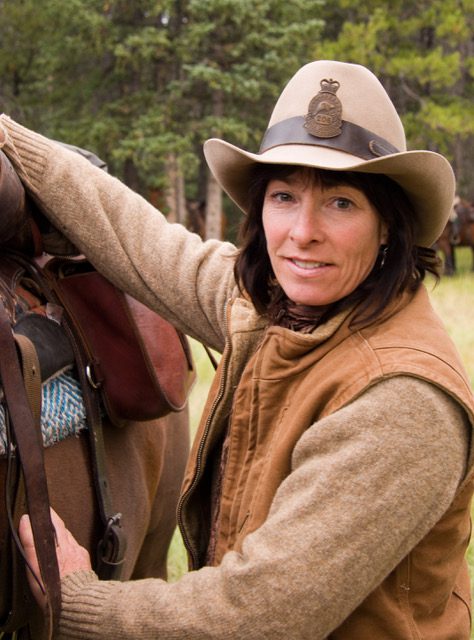
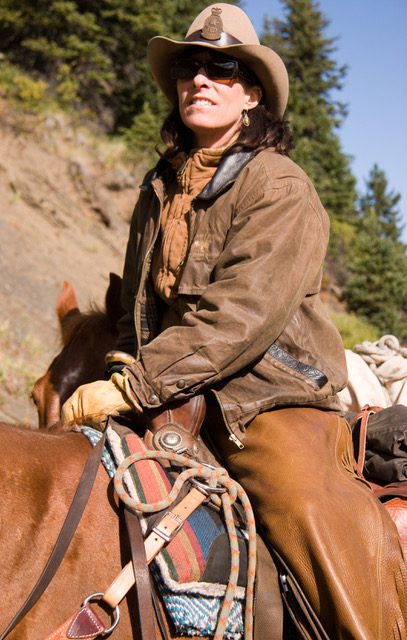
MH: How did the Warden Service change over the years? 4525:
SF: There were a lot of changes and you’ve probably heard from a lot of people a lot more about that, so I probably won’t speak much more about that. But I would say that I feel like I was so lucky to have been hired during the hay day because the Warden Service was still autonomous, we were empowered, we were able to do our job. We did it with pride with competency; we did it with incredible teamwork and camaraderie. There was so much support. I never felt like I was a part of affirmative action. Affirmative Action was something that started but didn’t really go anywhere but maybe it did and certainly, I was a woman and I got hired. But I never really felt like that was a part of the hiring process when I joined. I was definitely apart of some explorations on diversity. There was a complaint by a woman called Vivian Demuth where a lot of action was needed and I was a part of a team to work on diversification. I guess it did go somewhere because we are further ahead now than we were. I also was (based on my gender) a part of a management team working with the various Chief Park Wardens for a three-year period as a training and mentorship role. I worked with Perry Jacobson and a few others. That was very informative, different things that were happening at the time I would say. But really for me, the thing was that, especially in Elk Island and Jasper, I was part of the Warden Service when it really meant something to be a Park Warden and it was a really, really special time. And I was still working when a lot of changes started happening, there was a lot of disgruntlement, and different managers in place in Ottawa were changing things and that was right in the thick of things when the sidearm complaint was raised and I was not a key individual with all of that, but I was in the thick of it none the less when all that was happening. I was an observer; I guess you would say. I observed and witnessed a lot of the changes and I was still working when in 2012 when a lot of people were let go. I was working in Glacier when that happened and it was pretty tough times so I bore witness to all that.
4952: I guess one of the things that I would comment on because it affected me directly, was I witnessed the shift, not just of the Warden Service from being Park Wardens to having Wardens as a specialized Law Enforcement unit and the rest of us becoming Res Con (Resource Conservation Officers) with this uncertain title not certain what we are even being called. I think PSARMCU was one of the acronyms. It was a bit of a tongue and cheek but it was awful. Because we had an identity crisis after that, it was tough. I went from being a Park Warden (who loved being a park warden), to not being a Park Warden (because that meant working in Law Enforcement); and by that time I had specialized as a Visitor Safety Specialist. In 2003, Parks Canada undertook a review of Visitor Safety after the Strathcona-Tweedsmuir accident in Glacier National Park. Subsequent to that, Avalanche control services got its own review, and when they came to Glacier, they took a side look at how Visitor Safety was done under Resource Conservation and came to the determination that Visitor Safety should no longer be under Resource Conservation as it is in every other Park, but should go under the management of Avalanche Control Services. So, all of a sudden I ended up managing and coordinating, in concert with Avalanche Control Services (ACS) the shift of Visitor Safety from Resource Conservation to Avalanche Control Services which was really tricky because the long history of relations between Avalanche Control, (used to be called SRAWS, which stands for Snow Research and Avalanche Warning System), and the Warden Service in the history of Glacier Park was not always easy, shall we say. And I have to tell you, that was really difficult because for me as an individual, not only was I no longer a Warden but now I was no longer even in Resource Conservation which was the last vintage of being what I always had been, part of the Warden Service. I was now some kind of a something under Avalanche Control Services and I tell you that really changed. Avalanche Control Services is a culture all of its own and that was really difficult. And to have to lead that transition was really difficult and I would have to say, that maybe part of my legacy was that the transition was successful. We put our head down and made it happen and I have a tremendous respect for Bruce McMann who was leading ACS at the time and we worked really hard together to make that work. It was difficult for me…. and I think, probably difficult for him too.
MH: What about the Warden Service was important to you? (protecting and preserving, keeping people safe) 5505:
SF: All of those things. And I think clearly from my career, I feel like I was active in all of those things. Definitely protecting and preserving. I definitely put my time in Law Enforcement and being part of the high profile poaching case was interesting. Working with wildlife and in fire, being the two big Resource Management portfolios that I held was really important to me. And a lot of working in the backcountry was about Resource Management and then Visitor Safety or Public Safety because there was an element of that back there as well. And then obviously the last third of my career or more being very active in Visitor Safety and then finally running the Visitor Safety Program in Rev/Glacier, a big part. There is a lot about Visitor Safety over and above the rescues. There’s a lot of education, a lot of outreach programs, putting out avalanche bulletins, public education, seminars, school visits, and that kind of thing. It did make me feel like the Warden Service made a difference.
MH: Are there any legends or stories associated with the Warden Service that you can share? Is there anyone from the Service that stands out in your mind 5710:
SF: Oh so many and again it’s hard to know where to start but to me I have to say, to me one of the biggest legends and I think a very soft spoken or advert from legend, was my sister Kathy being, what I would like to call the first female Park Warden. There were two others hired at the same time but she went the distance and really made a mark. I would probably never have discovered or known anything about the Warden Service if it hadn’t been for her. She and her husband, Dale Portman, one of the best story tellers and legends in his own right, those are huge influences and are family. You know I’ve had some great mentors in my career that I have to mention. A huge mentor, teacher and friend was my partner for 18 years, Randy Fingland. He had a huge impact on my life and I think he had a huge impact on the Warden Service in many ways. Wes Olson was a tremendous mentor. He was the person I worked for/reported to in Elk Island and he taught me so much about wildlife and he ended up just being a really good friend to this day. You know somebody that helped me out a lot getting into Public/Visitor Safety was Gerry Israelson. Again he was a mentor and an enabler. He opened some doors for me and let me get into Visitor Safety and again, it was an old boys club, it really was and he opened the door. He was really helpful that way. And in the same hand, side by side was Pat Sheehan. He was a really close friend and mentor. There are many others but another really important one and someone that I first met long before I joined that Warden Service and that was Tim Auger. Lots of legends, lots of friends, lots of mentors in that group and there are so many more. Dave Smith who I worked with for so many years at Sunwapta, Greg Slatter I think he’s retired now but I’m not sure, somebody that I’d really like to follow up with because he was a very dear friend. There were so many. The camaraderie was a huge part of it. My closest friends in life have come from the Warden Service. It’s true, when you are hanging from a helicopter or fighting a fire or running from a cow elk or whatever it is that you are doing, even Law Enforcement situations, you do, you trust those people with your life and vice versa.
MH: Is there anything about the Warden Service, as you knew it, that you would like future generations to know? 10245:
SF: You know I think just what we said, I’ve already made reference to the fact that back in the early years when our title was “Park Warden”, we were proud of that and we were effective and we were empowered to do our jobs and I think we did it really well. And the teamwork, the camaraderie, the friendship was really powerful.
MH: What made the Warden Service such a unique organization? 10345:
SF: I think I’ve answered that.
MH: Do you have any lasting memories as a Warden? Any other stories?
SF: I have lots. To be honest I really have to sit down and think about it a little more because I find I do have an awful lot of stories but I’m drawing a blank at the moment.
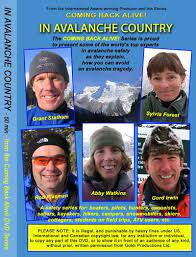
MH: Do you ever miss being a Warden?
SF: I do and I don’t. I miss that time of my life because it was really interesting, I learned a lot. It was my formative years when I was really growing as a professional. I became a mountain guide during those years, that was a big part of my life, going through the ACMG (Association of Canadian Mountain Guides) examination process. It’s when I developed my closest friendships and it was when things were really happening and I think people generally tend to be nostalgic about those years especially when you get older, you tend to really value your 20s, 30s and 40s because it’s when you are really contributing. It’s not that I’m not contributing now but it’s when things are really happening in your life. And I miss the way things were then. When I first retired from Parks, it was hard but I retired by choice, when I wanted and on my own terms which was positive. Even now when I go to reunions and visit with people who are still working and I hear about the rescues that are happening now, I do have that nostalgia and sentimentality but I have a very full life now and I’m pretty content. But yah, when I think back on those days with those people, I do miss it, of course I do.
MH: Do you have any photos of yourself as a warden that you would like to donate? Artifacts:
SF: I can look but I doubt it. We had a house fire in 2015 so I lost everything. I was the photographer and the archivist in the family so when I lost everything, it was a big loss for the family as well. I had all the photos from my dad and grandfather everything but if I can find anything, I will forward them to you.
MH: What year did you retire? 10950: SF: 2013
MH: What do you enjoy doing in retirement? 10100:
SF: Well I’m still actively guiding. I’m a mountain guide so I guide full time in the winter ski guiding and alpine guide in the summer. I still teach industry courses for the Canadian Avalanche Association. My husband and I have 9 horses between the two of us and he’s an outfitter which is interesting because as a Backcountry Warden, I used to patrol the backcountry and do boundary patrol and now I’m on the other side of the boundary, doing hunting trips with my husband and all of our horses and two dogs and we have a small little hobby farm and do a lot of landscaping and gardening and between all of that, it keeps me pretty busy. And I’m now president of the ACMG so that’s another whole chapter.
MH: Is there anything I haven’t asked you that you think I should know about the Warden Service? 11110:
SF: I’ll have to think on that. Once I see the transcript, I may take a little more time with that. There are so many stories. Even in the backcountry, you didn’t have contact, just single side band radio (SSB) and it was dodgy at best. I remember one time where I couldn’t get out for 3 days at the time, that was acceptable. On day 3, I knew that they were going to start worrying about me so I got up really early (0300) and rode like hell to the next cabin hoping that the SSB would work and I arrived just in time for the helicopter to fly in. Brian Wallace, another mentor, huge respect for Brian, gets out of the helicopter and says, “Oh, well. You’re fine.” “Yeah, I’m fine”. But the irony was I could have been injured or dead 2 days prior but 3 days was kind of the cutoff. How things have changed since then, I remember feeling quite resentful when we were issued VHS radios and Satellite phones because A) I had to carry them and B) I actually had to call in on the damn things…I thought ‘what an inconvenience’. Little anecdotes like that comes to mind.
MH: Anyone else to interview? 11350
SF: People who influenced me and hopefully they are on the list are Brian Wallace and Dave Carnell, He retired quite young and was a prominent force back in the day. I don’t know if Greg Slatter is retired or not, but he would be a really interesting person to talk to. Although you might have to ply him with whiskey or something to get him talking, he’s a bit of a recluse. Let me think on that there are lots of people out there. Allan Polster and John Flaa he’s an interesting fellow – (on the list and I think Sue is interviewing him soon.
(Brian Wallace was interviewed in Phase 8. John Flaa was interviewed in Phase 9. Greg Slatter, Allan Polster and Dave Carnell are on the future interviews list.)
MH: Any final comments?
SF: I don’t know how much I added to your knowledge but think this is an important project. It’s the time (it takes) to try and arrange the interview and everything.
This interview was conducted by Monique Hunkeler
Monique Hunkeler first started working with Parks Canada in 1989 as Secretary to Banff National Park Finance Manager. She moved into a position as Dispatcher for the Banff Park Warden Service and later worked within Banff National Park and Town of Banff’s IT departments. She is experienced with the interviewing, transcription and archiving process the Park Warden Service Alumni Society.
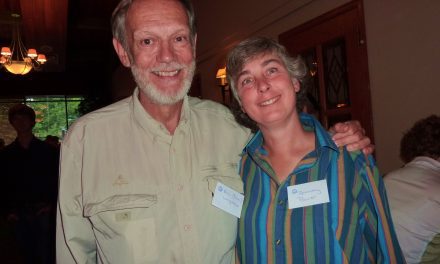

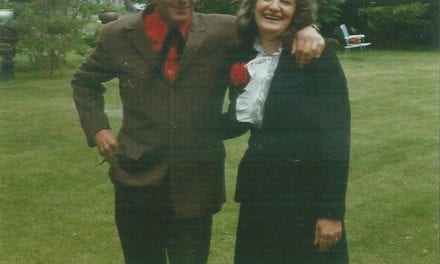

Wonderful stories and overview of a fine career. Also an excellent perspective of the times when the Warden Service exuded pride and professionalism and as noted had tremendous esprit de corp. There were so many interesting characters, hair raising stories, and a cadre of living legends before things went to hell in 1999 with the officer safety issue. As so many of us who worked through that era have remarked, we had 20 years of heaven and ten final years of hell in our careers ! Great job Sylvia !